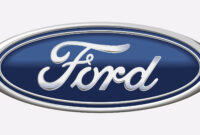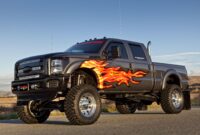Old Dually Trucks For Sale: A Comprehensive Buyer’s Guide sale.truckstrend.com
Introduction: The Enduring Allure of the Classic Dually
In a world increasingly dominated by sleek, digitalized vehicles, there remains a powerful, undeniable appeal to the rugged, no-nonsense machines of yesteryear. Among these, the "old dually truck" stands out as a true icon – a testament to raw power, unwavering utility, and a bygone era of American engineering. Defined by their dual rear wheels, these heavy-duty pickups were built to work, to tow the heaviest loads, and to conquer the toughest terrains. But beyond their formidable capabilities, old duallies evoke a sense of nostalgia, a connection to simpler times, and an appreciation for mechanical simplicity.
Old Dually Trucks For Sale: A Comprehensive Buyer’s Guide
For many, the search for an old dually isn’t just about finding a vehicle; it’s about acquiring a piece of history, a project, or a reliable workhorse that still outshines many modern counterparts in sheer robustness. This comprehensive guide aims to navigate the exciting, yet often challenging, landscape of old dually trucks for sale, offering insights, practical advice, and essential considerations for anyone looking to bring one of these magnificent beasts home.
Why Go Dually? The Enduring Appeal of Vintage Workhorses
The decision to pursue an old dually is often driven by a unique blend of practical need and passionate desire. These trucks offer distinct advantages that continue to make them highly sought after:
- Unmatched Towing and Hauling Stability: The primary purpose of a dually is its enhanced stability under heavy loads. The four rear tires distribute weight more evenly, reducing sway and increasing traction, making them ideal for pulling large RVs, horse trailers, or heavy equipment.
- Rugged Durability: Many older duallies were built with heavy-gauge steel and simpler mechanical systems, designed for longevity and abuse. They often lack the complex electronics that can plague newer vehicles, making them easier and cheaper to repair for the DIY enthusiast.
- Unique Aesthetic and Character: There’s no mistaking the imposing stance of a dually. Their wide rear fenders and dual wheels give them an unmistakable presence, often admired for their classic lines and "big truck" appeal. Each scratch and dent tells a story of work and adventure.
- Potential for Appreciation: Well-maintained or thoughtfully restored older trucks, especially specific desirable models, can appreciate in value over time, turning an acquisition into an investment.
- Cost-Effectiveness: While restoration can be costly, the initial purchase price of an older dually is often significantly less than a new heavy-duty truck, offering substantial capability without the hefty new vehicle depreciation.

What to Look For: Key Considerations When Buying an Old Dually
Purchasing an old dually is not like buying a new car; it requires a keen eye, patience, and a willingness to get your hands dirty. Here’s a breakdown of critical areas to inspect:
- Engine and Drivetrain:
- Gas vs. Diesel: Older diesels (like the Ford 7.3L Powerstroke, GM 6.2/6.5L Detroit Diesel, or Cummins 5.9L) are renowned for their longevity and torque but can have specific maintenance needs (injectors, head gaskets, lift pumps). Gas engines are often simpler but less fuel-efficient for heavy work.
- Startup & Running: Listen for unusual noises (knocking, ticking, excessive smoke). Check fluid levels and color. Test the transmission for smooth shifts and engagement in all gears, including reverse and 4×4 if applicable.
- Leaks: Inspect under the truck for oil, coolant, or transmission fluid leaks.
- Chassis and Frame: This is paramount. Old trucks, especially those from rust-prone regions, can suffer from severe frame rot. Look for:
- Rust: Pay close attention to the frame rails, crossmembers, body mounts, cab corners, rocker panels, and bed fenders (which are unique to duallies and often rust first). Surface rust is manageable; deep, flaky, or perforated rust is a major red flag.
- Cracks or Repairs: Inspect for any signs of welding or patching on the frame, indicating previous damage or structural issues.
- Suspension and Steering:
- Worn Components: Check ball joints, tie rods, control arm bushings, and leaf springs for excessive wear or breakage. A bouncy ride or excessive body roll can indicate worn shocks or springs.
- Steering Play: With the engine off, have someone turn the steering wheel while you watch the steering linkage. Excessive play can indicate worn steering box, tie rods, or ball joints.
- Brakes: Test the brakes thoroughly. Check for pulling, spongy pedal feel, or grinding noises. Inspect brake lines for rust or leaks, and check the condition of calipers/wheel cylinders and rotors/drums.
- Tires: For a dually, tire condition is doubly important. All six tires should be in good condition, ideally matching in brand and wear, and have sufficient tread depth. Uneven wear can indicate alignment issues or worn suspension components. Check the date code on tires; even if they look good, old tires can be dangerous.
- Body and Interior:
- Rust and Dents: Beyond structural rust, check for rust around windshields, door bottoms, and wheel wells. Assess the overall condition of the body panels and paint.
- Electrical: Test all lights, wipers, horn, radio, power windows, and A/C/heater.
- Interior Comfort: Check seats for tears, dashboard for cracks, and overall cleanliness.
- Documentation: Always verify the vehicle title is clean and matches the VIN on the truck. Ask for service records, if available, as they provide valuable insight into the truck’s history and maintenance.
Where to Find Them: Navigating the Market for Old Dually Trucks
The hunt for the perfect old dually can take you to various corners of the market:
- Online Marketplaces:
- Craigslist and Facebook Marketplace: Excellent for local finds, often from private sellers. Be prepared for a wide range of conditions and prices.
- eBay Motors: Offers a broader geographical reach and often more detailed listings, including auctions.
- AutoTrader Classics / ClassicCars.com: Dedicated to classic vehicles, you might find more polished or restored examples here.
- Specialized Forums and Clubs: Online forums dedicated to specific truck brands (e.g., Ford-Trucks.com, Cummins Forum, GM-Trucks.com) or vintage truck enthusiasts often have "for sale" sections. These communities can also offer valuable advice on specific models.
- Auctions: Local farm auctions, government surplus auctions, or even classic car auctions (for highly restored examples) can yield results. Be aware of "as-is" sales.
- Word of Mouth / Local Dealers: In rural areas, old duallies often change hands through local connections. Some smaller, independent used truck lots might specialize in older work vehicles.
- Farm Country: Trucks used in agricultural settings are often well-maintained mechanically but may have rougher exteriors.
The Buying Process: Tips for a Smooth Transaction
Once you’ve found a potential candidate, follow these steps to ensure a confident purchase:
- Set a Realistic Budget: Beyond the purchase price, factor in potential immediate repairs, registration, insurance, and ongoing maintenance. Older vehicles will always require more attention.
- Research Specific Models/Years: Before you look, know which models and years are generally considered reliable or have common issues. Owner forums are invaluable for this.
- Inspect in Person: Never buy sight unseen if possible. If you can’t go yourself, arrange for a trusted mechanic or friend to inspect it on your behalf.
- Test Drive Thoroughly: Drive the truck on various road types. Listen for unusual noises, feel for vibrations, and test all functions. If possible, test it with a moderate load to simulate its intended use.
- Negotiate: Most prices for older vehicles are negotiable. Be prepared to walk away if the price isn’t right or if significant issues are uncovered.
- Pre-Purchase Inspection (PPI): This is the single most important step. Hire an independent, qualified mechanic (preferably one experienced with older heavy-duty trucks) to perform a comprehensive inspection. They can identify issues you might miss and provide an estimate for necessary repairs.
- Understand Registration and Insurance: Older vehicles might have different requirements or offer classic car insurance options, which can be more affordable.
Common Challenges & Solutions
Owning an old dually isn’t without its quirks. Be prepared for:
- Rust: It’s almost inevitable. Solutions range from minor bodywork and rust encapsulation to panel replacement or even frame-off restorations for severe cases.
- Parts Availability: While many components for popular models (like Ford OBS trucks or Dodge 2nd-gen Rams) are readily available aftermarket or from salvage yards, obscure parts might require more searching or fabrication.
- Maintenance Costs: While parts can be cheaper, labor for complex repairs can add up. Being handy with a wrench can save you a fortune. Factor in lower fuel economy for older, less efficient engines.
- Emissions Regulations: Depending on your state or country, older diesel trucks might be subject to stricter emissions testing, potentially requiring modifications. Research local laws.
- Ride Comfort: Older trucks often have stiffer suspensions designed for heavy loads, which can translate to a rougher, bouncier ride when unloaded. Aftermarket suspension upgrades can help.
Estimated Price Ranges for Old Dually Trucks (by Condition/Era)
Prices for old dually trucks vary wildly based on make, model, year, condition, mileage, and region. The table below offers general estimates and should be used as a guide, not a definitive price list.
| Condition / Era Category | Typical Price Range (USD) | Key Characteristics & Notes |
|---|---|---|
| Project / Parts Truck | Under $5,000 | Non-running, significant rust, major mechanical issues. Best for experienced mechanics or those needing donor parts. |
| Runnable Workhorse | $5,000 – $15,000 | Runs and drives, but likely has high mileage, cosmetic flaws, and needs immediate maintenance/repairs. Good for a budget-minded user. |
| Well-Maintained Driver | $15,000 – $30,000 | Good mechanical condition, minimal rust, decent paint and interior. May have some minor issues but is reliable for daily use or regular towing. |
| Restored / Show Quality | $30,000+ | Meticulously restored, often with upgraded components, custom paint, and pristine interiors. Can fetch much higher prices depending on rarity and quality of restoration. |
| Classic Era (Pre-1980s) | Varies widely, often higher | Less common, sought after by collectors. Condition dictates price, but even projects can be valuable. |
Note: These ranges are estimates for general "old dually" trucks and do not account for highly collectible or rare models, which can command significantly higher prices.
Frequently Asked Questions (FAQ) about Old Dually Trucks For Sale
Q1: What’s considered "old" for a dually truck?
A1: Generally, trucks from the 1970s through the early 2000s are considered "old" in this context. Trucks from the 1980s and 1990s are particularly popular for their blend of classic styling and modern enough mechanics.
Q2: Is a gas or diesel engine better for an old dually?
A2: It depends on your primary use. Diesels generally offer superior torque for heavy towing and better fuel economy under load, but can be more expensive to repair. Gas engines are often simpler and cheaper to maintain for lighter duties or occasional use.
Q3: Are old duallies expensive to maintain?
A3: Initial parts costs for many common older models can be surprisingly affordable compared to newer trucks. However, the frequency of maintenance and repair might be higher. Labor costs for professional repairs can add up, so DIY skills are a huge advantage.
Q4: Can I daily drive an old dually?
A4: Yes, many people daily drive older duallies. Be mindful of their size (parking can be a challenge), lower fuel economy, and potentially rougher ride compared to modern vehicles.
Q5: How much can an old dually really tow?
A5: Towing capacity varies greatly by specific model, year, engine, and drivetrain. Always consult the manufacturer’s specifications for the particular truck. More importantly, ensure the truck’s current mechanical condition (brakes, transmission, suspension) is up to the task.
Q6: Where is rust most common on old duallies?
A6: Common rust spots include cab corners, rocker panels, wheel wells (especially the wide dually fenders), floorboards, and the frame rails. Inspect thoroughly, as hidden rust can be a costly surprise.
Conclusion: The Reward of the Right Old Dually
The pursuit of an old dually truck is a journey that requires diligence, research, and a clear understanding of the commitment involved. These aren’t just vehicles; they are powerful tools, enduring symbols, and often, beloved members of the family. By thoroughly inspecting potential candidates, understanding the market, and being prepared for the realities of owning an older vehicle, you can find a robust workhorse that will serve you faithfully for years to come. The right old dually isn’t just a truck for sale; it’s an opportunity to own a piece of automotive history, capable of handling almost anything you throw at it, with a character that no modern vehicle can truly replicate.



